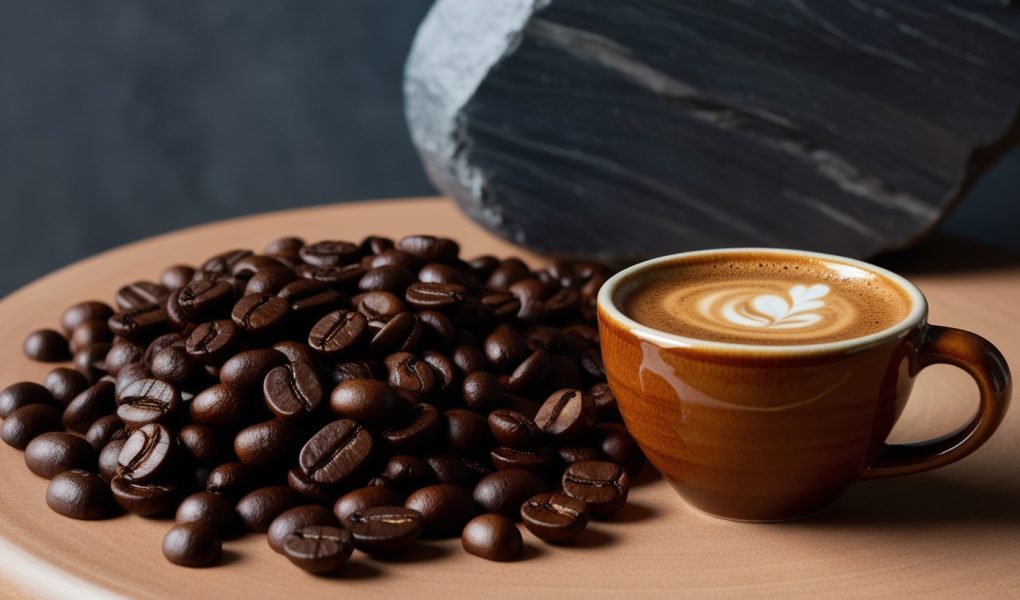When it comes to espresso, there’s often a sense of mystery around what makes a truly great shot. Some people swear by specific beans or blends, while others believe it’s all in the brewing technique. This raises a common question among coffee enthusiasts and beginners alike: Can espresso really be made from just any coffee bean, or does it require a special kind?
The truth is, espresso isn’t a type of bean—it’s a method of brewing. It’s a process that uses high pressure to extract a rich, concentrated shot with a layer of crema on top. This means that, technically, you can use any coffee bean to make espresso. However, the choice of bean plays a major role in flavor, mouthfeel, and balance, shaping the unique character of each shot.
In this article, we’ll explore how different beans perform as espresso, from single-origin beans to traditional blends. Whether you’re curious about experimenting with various beans or just want to understand what makes espresso taste the way it does, this guide will help you navigate the options and make a shot that’s all your own.
What Defines Espresso?
Espresso isn’t defined by a specific bean or even a roast level—it’s all about the process. Espresso is a brewing method that uses finely ground coffee, high pressure, and a short extraction time to create a small, concentrated shot with a unique depth of flavor and texture. This method transforms coffee in a way that other brews can’t quite match.
A true espresso shot should have a rich, full-bodied taste with a layer of crema—a golden foam that sits on top, giving espresso its distinctive look and adding a velvety mouthfeel. The crema is formed as hot water forces oils and fine coffee particles through the tightly packed grounds under high pressure, something you won’t see in drip or pour-over coffee.
Another defining quality of espresso is its intensity. Since the brewing process extracts more from the coffee grounds in a short period, every sip is packed with concentrated flavor. This intensity makes espresso a favorite base for drinks like lattes and cappuccinos, where milk softens the flavor without losing the essence of the coffee.
Ultimately, espresso is a technique, not a bean. While some beans and roasts work particularly well in this format, the process itself is what brings out the bold, complex flavors that coffee lovers associate with espresso. So while any bean can technically be used for espresso, the unique characteristics of this brewing method are what give each shot its signature taste and texture.
Types of Coffee Beans and Their Characteristics
While espresso can be brewed with any coffee bean, the type of bean you choose can dramatically shape the flavor, body, and overall experience of your shot. Coffee beans come in a few main varieties, each with unique characteristics that can either complement or challenge the intense flavors we expect from espresso. Let’s take a closer look at the main types of coffee beans and how they play into the espresso experience.
1. Arabica
Arabica beans are the most popular and widely grown variety, known for their smooth, mild flavor and subtle acidity. Often characterized by notes of fruit, sugar, and even floral hints, Arabica beans offer a nuanced profile that many coffee lovers appreciate. For espresso, Arabica’s smoothness and complexity can create a balanced, refined shot. However, because Arabica is naturally lower in caffeine and has a softer body, some espresso enthusiasts prefer blending it with other beans for a bit more intensity.
2. Robusta
Robusta beans are less common in single-origin coffees but are a staple in many espresso blends. Known for their strong, bold flavor and higher caffeine content, Robusta beans bring a punch to the cup with earthier, sometimes nutty, flavors and a thicker, almost creamy body. The higher caffeine content and oils in Robusta contribute to a rich crema, making it a popular choice for those who enjoy a strong, intense espresso. While it may lack the subtlety of Arabica, Robusta adds depth and can create a more traditional, Italian-style espresso.
3. Liberica
Though rare, Liberica beans have a distinctive, almost smoky flavor that can add a unique twist to espresso. Originating from specific regions like the Philippines, Liberica beans are larger and have an irregular shape compared to Arabica or Robusta. Their flavor profile is often described as bold and woody, with hints of floral or fruity undertones. While Liberica isn’t commonly used in espresso blends, those seeking an adventurous, unconventional flavor might enjoy trying it for a unique espresso experience.
4. Excelsa
Excelsa is another uncommon variety, mainly grown in Southeast Asia. It’s technically a subspecies of Liberica, but its flavor is distinct enough to stand on its own. Excelsa beans are known for their tart, fruity notes and complex body, which can bring a layered taste to espresso. However, due to its bold acidity, Excelsa is more commonly used in blends than on its own. For those who enjoy a tangy, bright shot, Excelsa can add an interesting depth to espresso when combined with other beans.
Each of these beans has its own character, and the type you choose will shape the flavor, aroma, and body of your espresso shot. While Arabica and Robusta are the most common choices, experimenting with Liberica or Excelsa can open up new flavor possibilities. Whether you’re after smoothness, boldness, or complexity, there’s a bean type that can bring out your favorite qualities in espresso.
Can Any Coffee Bean Be Used for Espresso?
Technically, yes – any coffee bean can be used to make espresso. Since espresso is a brewing method, not a specific bean type, you’re free to experiment with different varieties and blends to find what you like. But while any bean can be used, not every bean will yield the same results, and some will suit espresso better than others.
The intense brewing process of espresso—high pressure, fine grind, and short extraction time—tends to amplify the natural flavors of any bean. This means that a bean’s characteristics, whether fruity, earthy, or nutty, will come through more clearly in espresso than in other brewing methods. That’s why choosing the right bean can make a big difference in how your espresso shot tastes.
For instance, Arabica beans bring out smooth, sweet notes with a pleasant acidity that works well in espresso, giving it a refined and balanced taste. But on their own, Arabica beans can sometimes lack the boldness and thickness that espresso lovers crave, which is why they’re often blended with Robusta. Robusta beans add a deeper, more robust flavor and a thicker crema, enhancing the strength and richness of an espresso shot.
Then there’s the matter of roast level. While lighter roasts highlight a bean’s natural flavors and are popular in drip coffee or pour-over, they can taste overly acidic or sharp in espresso. Medium and dark roasts, on the other hand, tend to bring out the bold, caramelized flavors that espresso is known for, making them a common choice for this method.
In the end, while any coffee bean can technically be used for espresso, the best choice depends on what you’re looking to get out of your shot. If you enjoy experimenting with flavor profiles, try different beans, blends, and roasts to see how each one changes the taste. Some beans may surprise you with how well they work in espresso, while others might not hit the mark. The beauty of espresso is in its versatility, letting you tailor each shot to suit your own taste.
The Role of Roast in Espresso Flavor
Roast level plays a significant role in how your espresso tastes, shaping the flavors that come through in each shot. While espresso can be made with beans roasted to any level, medium to dark roasts are often preferred for their rich, full-bodied flavors and smoother finish.
Light roasts are known for their bright, acidic flavors, which can bring out a bean’s natural character. In a pour-over or drip brew, a light roast’s fruity, floral, or even tea-like notes can shine, making for a lively cup. But in espresso, where flavors are concentrated, light roasts can come across as overly sharp or tangy. Some people enjoy the brightness and complexity a light roast brings to espresso, but it’s a bolder, more niche choice.
Medium roasts offer a nice balance, capturing some of the original flavors of the bean while also introducing the caramelized, nutty undertones that many people associate with espresso. This roast level allows for a smooth, flavorful shot without too much acidity or bitterness. It’s a versatile choice, and many specialty coffee shops use medium roasts for their espresso to highlight the bean’s unique qualities while still delivering a rich, satisfying cup.
Dark roasts are often the classic choice for espresso, especially in traditional settings. With a dark roast, the coffee develops a deep, robust profile with notes of chocolate, caramel, and smokiness. This level of roast reduces acidity and highlights the bold, toasty flavors that many people expect from espresso. Dark roasts also produce a thicker body and richer crema, adding to the luxurious mouthfeel that espresso lovers enjoy. If you’re looking for an intense, smooth espresso with little acidity, a dark roast might be your best bet.
The right roast level depends on your flavor preferences. If you enjoy a lively, complex shot, try experimenting with lighter roasts. For a balanced, approachable espresso, medium roasts can offer the best of both worlds. And for a classic, bold experience, dark roasts bring the depth and richness that make espresso such a satisfying brew. The beauty of espresso lies in its adaptability, so don’t be afraid to explore different roasts to find the perfect flavor profile for you.
Conclusion: Crafting Espresso with Your Bean of Choice
So, can espresso be made from just any coffee bean? The answer is yes—with a little thought about the flavors and experience you’re after. Espresso is a brewing method that brings out the best (and sometimes the boldest) in any bean you choose. While some beans and roasts might feel more “classic,” there’s no rule saying you can’t experiment.
Arabica and Robusta beans each bring their own unique qualities, while roast levels allow you to further tailor the taste of your espresso. Whether you prefer the balanced notes of a medium roast or the bold, chocolaty richness of a dark roast, your choice of bean and roast will help shape your espresso experience.
In the end, espresso is all about finding what works for you. With so many options to explore, you’re free to create a shot that reflects your taste and preference. So don’t be afraid to try different beans, blends, and roasts—you might just discover a new favorite.



